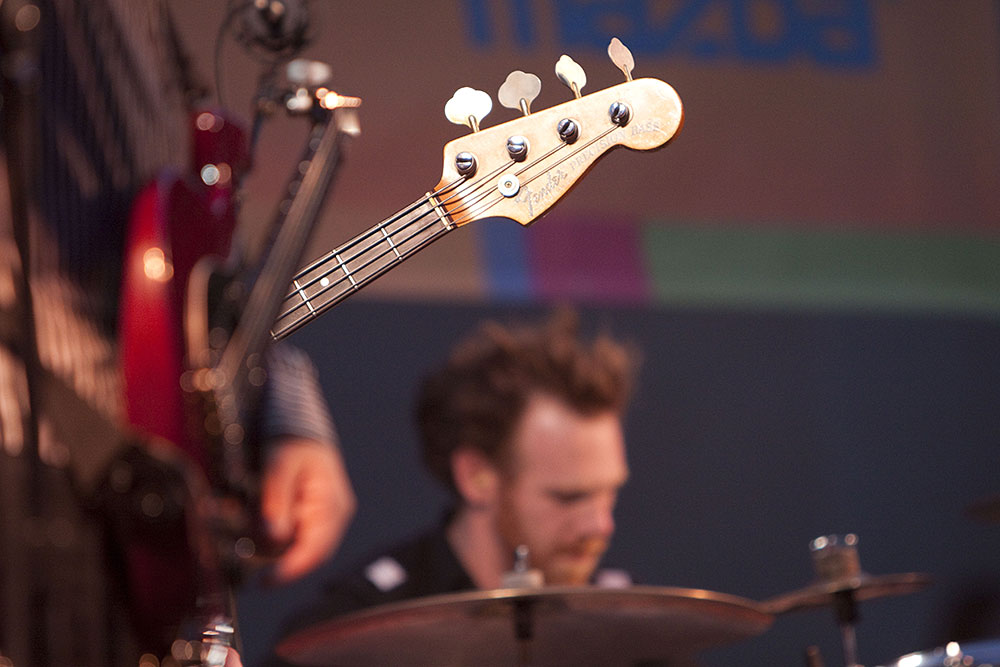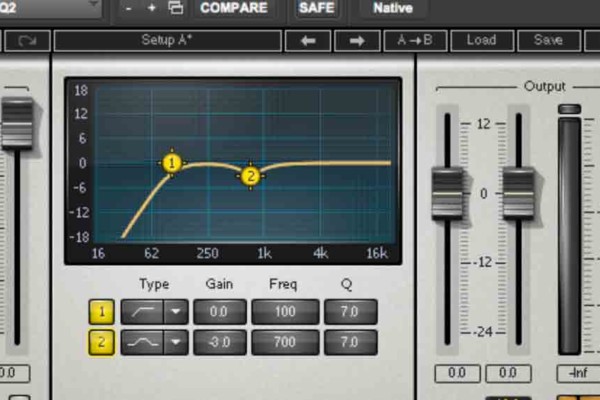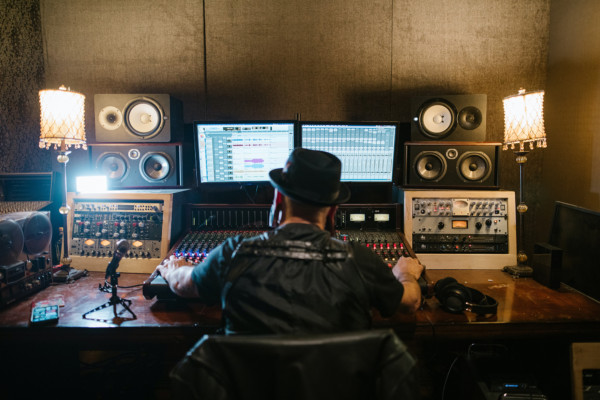The Lightbulb Moment: Keeping Time In The Studio

I pledge allegiance to the time… set by the drummer? By the click? Somewhere in between?
These days, almost all recordings are done to a click track. And why not? It forces everyone to be aware of the desired tempo and to be responsible for their own sense of good time-keeping. It eliminates huge fluctuations, assuring that the adrenaline rush won’t result in an actual rush, and it certainly makes the editing process much easier. That said, playing alongside a click track is no easy task. While some people may inherently keep good time, most people have to develop that skill and improve upon it through years of playing with a metronome or drum machine. Yes, this is called practice. We all need to practice. Even people with the magical ability to keep good time need to practice. Okay, okay, lecture over. In any case, while you, a super awesome bass player with great time, happen to be on a session with a drummer who is, well, less successful at keeping time, what do you do?
There are a couple of different approaches to this problem. First, it’s best to listen back to a take and determine who is most likely to drift from the tempo and when that happens. If there are minimal issues and you happen to be the one at fault, then make a mental note of where the drift occurs and do another take with that in mind. If the overall recording is quite rough around the edges, then it’s up to you to make a judgment call regarding whether you stick with the drummer, regardless of where he goes, or whether you stick to the click.
I’ve found that the best way to make this call is by determining (in the most innocent and subtle way) what the post-tracking editing process will be like. Is the engineer or producer going to “beat detect” the parts? Are they going to go in and copy and paste from the best executed sections? Or is there going to be little to no editing? Of course, the goal of every session is to end up with a great sounding track by the end of the day, but there’s no telling how much work may be done after the initial session. Since digital recording has made editing so easy and, for all intents and purposes, an industry standard, many people now spend a considerable amount of time and money on that step of the process.
Okay, so let’s say you very discreetly find out that the engineer is going to spend a significant amount of time editing. In this case, your allegiance is to the click. Do what you need to do in order to get a good personal take. Bring the click up in your headphone mix and pull the drums down. Try to focus on staying with the tempo without getting distracted by what the drummer is doing. After all, it’s likely that his part will be moved, massaged, and manipulated to agree with the click.
If minimal editing will be done and the purpose of the session is to wrap up with something “natural,” then I recommend bringing the click down in your headphones and playing to the drummer. This will make the track feel a bit more band-like (which is usually the goal anyway). If the drummer drifts, at least you’ll go with him.
If you’re doing a session where the drummer stays pretty close, with perhaps a bit of fluctuation here and there, then try to do one more pass playing solely to the drums. Omit the click from your headphone mix and just focus on being a real rhythm section (aka, with the drummer being the undisputed timekeeper). While this may only happen if time allows, this final pass will be the best way to glue everything together.
In case you haven’t noticed, the “make or break” element of playing in the studio, and of keeping good time, is your headphone mix. There are plenty of things we can’t control about recording sessions, but in the event that you have your own headphone mix, you can at least control what you need to hear in order to perform your best. The same rules apply if you happen to be doing a live performance with in-ear monitors—while you might not have your own control box, you’ll be able o communicate with the monitor engineer in order to build the proper mix.
If you have a home studio, try experimenting on your own by altering the ratio of drums, click, and the other instruments. Record yourself and then listen back without the click track to determine how well you fit into the mix. You may notice that the pocket is influenced by what you do or do not hear… the studio monitors will provide you with an unbiased mirror. If you can pinpoint what is likely to throw off the grove, don’t be afraid to omit or have just a hint of it. Vocals? You probably need just a touch. Electric guitar? Sure, but not much. Bass? Yes, please. A drummer that hasn’t had much experience playing to a click? Yikes. These levels will likely be different in a live situation, but it all comes down to knowing what you need in order to catch cues from the other players. And finally, remember that the overall goal is to make the music feel good. If you find yourself sticking too much to the click and getting out of sync with the drummer, then forget perfection and go with intuition. After all, they hired real players for a reason.
Ryan Madora is a professional bass player, author, and educator living in Nashville, TN. In addition to touring and session work, she teaches private lessons and masterclasses to students of all levels. Visit her website to learn more!



